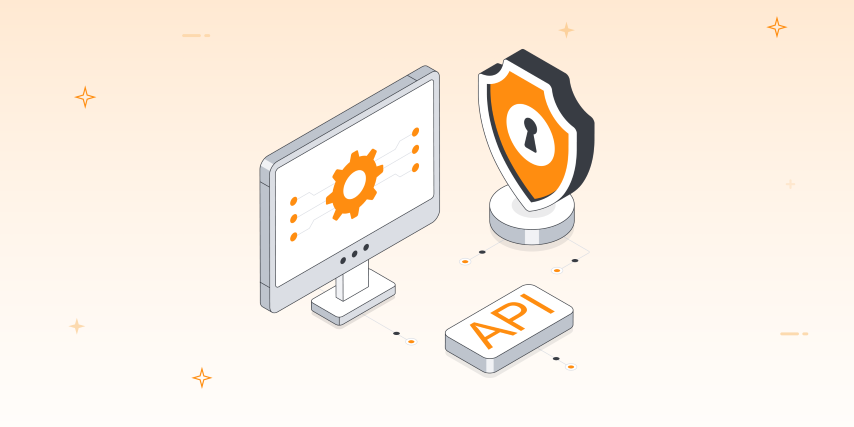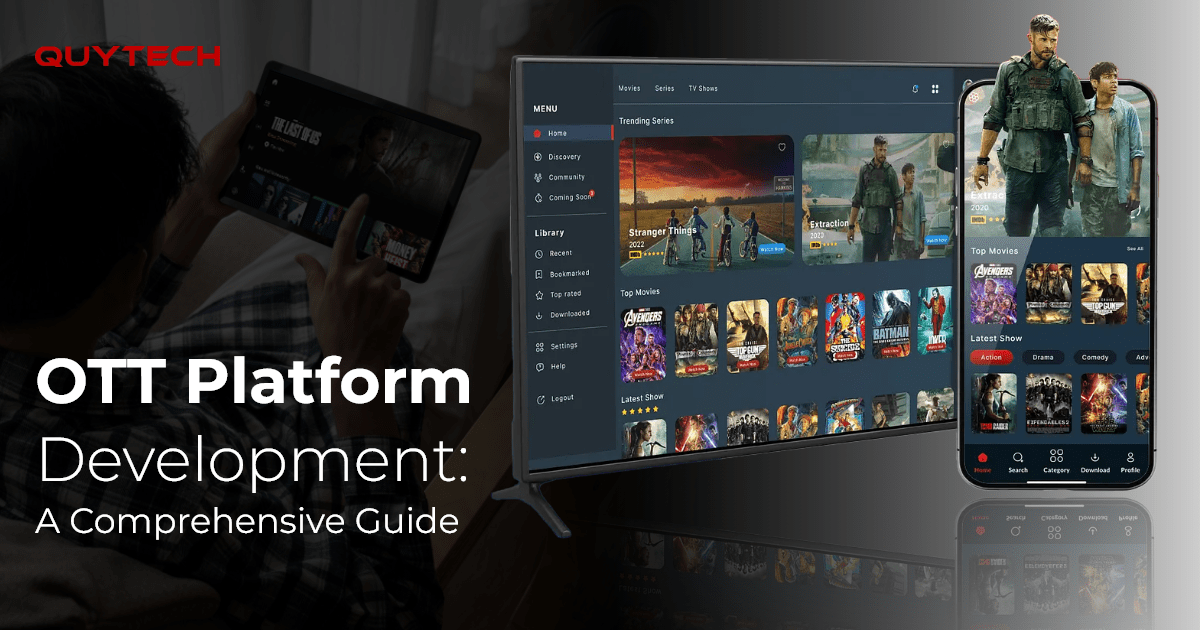Virtual reality (VR) technology has come a long way in recent years, and it’s no longer just for gamers and tech enthusiasts. As we are already in 2023, VR has become more accessible than ever before, with an increasing number of businesses and industries using it for various purposes. With VR, you can not only watch and listen to digital content but also experience it in ways that were once unimaginable. In fact, the VR tech market is expected to continue its rapid growth, with a projected market size of $92.31 billion by 2027.
Therefore, whether you’re looking to create a VR game, an immersive training program, or a virtual shopping experience, learning how a VR app is made can be valuable. This step-by-step guide for creating a VR app will walk you through everything there is to know about VR app development. But before that, let’s understand what virtual reality in apps means.
By witnessing these market stats, if you’re interested in exploring how to make a VR app, the below guide is for you.
What is Virtual Reality in Apps?
In the context of apps, Virtual Reality (VR) refers to a technology that creates a simulated environment, which users can interact with using a VR headset or other devices. This technology typically involves creating a three-dimensional (3D) digital environment that simulates the physical world or an imaginary world, which users can navigate and explore as if they were actually there.
VR apps can provide users with an immersive and interactive experience, allowing them to feel as if they are part of the virtual environment. This technology has been widely used in various industries, including gaming, education, healthcare, and entertainment, among others.
How to Make a VR App? – Step-by-Step Process
Now that you know what virtual reality means in apps, let’s look at the step-by-step process of virtual reality app development. Developing a VR app is a complex undertaking that requires expertise in multiple technologies to ensure commercial success. One of the fundamental principles of creating a VR app is to design it with a high-performance, low-power-consuming architecture, and error-free application code. This involves both software and hardware design, including the use of prototyping tools, VR development libraries, frameworks, and more. To build a successful application you can also outsource a VR development company. Let’s explore all the major steps for VR app development.
1. Define Major Goals
The first and most crucial step in creating a VR app is to define its major goals. Before embarking on the process of making a VR app, it’s essential to have a clear understanding of what you want to achieve with the app. This could be a standalone experience, a gaming experience, a touring experience, or something else entirely.
Defining these goals is essential because it allows you to answer critical questions such as how to make a VR app that achieves your desired outcomes. Without clear parameters, creating an immersive and precise experience for users will be difficult, if not impossible. Therefore, taking the time to define the major goals of your VR app is crucial for its success.
2. Lay Out the Platform Compatibility
Compatibility is a crucial factor that can make or break your VR app’s success. When designing a VR app, it is essential to consider the device compatibility, as it directly impacts the overall user experience. Here are some important things to consider:
1. Virtual Reality for Smartphones
VR applications for smartphones have gained immense popularity in recent years. However, some VR platforms like Google Daydream may require launching into a separate app environment, which can be inconvenient for users. Moreover, phone-based VR has its limitations, and developers need to ensure that their app can deliver equally intense physical experiences as desktop-based VR does.
2. Virtual Reality for Computers
VR apps designed for computers are the most compatible ones. Devices like Oculus Rift, HTC Vive, and Playstation VR provide an immersive experience and make this VR exploration possible. Various purposes like gaming, education, and so on can also use this experience. As VR becomes more popular, developers are learning the exact design chops required for various gaming experiences.
3. Selecting a Platform for Your VR App
Choosing the right platform and software development kit is the first step toward creating a successful VR app. The platform you choose directly impacts the app adoption rate, which, in turn, has a huge impact on the revenue. Here are some questions to ask yourself while selecting an appropriate platform:
- Which device are you creating the VR app for?
- Do you want to create a VR app for mobile or a virtual reality headset?
- If you’re making a VR app for mobile, will it be for Android, iOS, or both?
- Are you looking to make a VR app inside some VR providers like Oculus or will it be standalone?
You can use certain VR platforms like SteamVR, XboxVR, and Oculus Home to support VR development. They provide a complete set of VR development tools, and you won’t need any other software installation. Starting with a brand-specific SDK would be the perfect first step.
Furthermore, you must also consider the launching platform for your app. Some of the most popular and widest-reaching platforms are mobile VR headsets like Samsung Gear or new standalone, affordable options like Oculus Go. However, if your goal is to reach high-end game-playing audiences, you would need to prioritize platforms like Oculus Rift, HTC Vive, etc. that offer the best user experience.
4. Select the Right Game Engine
Selecting the right game engine is an important step in the VR development process of an app. It plays a crucial role in storing the data that users will see in their virtual world. Game engines render images and provide input methods to the user, making them the backbone of the VR app.
There are several game engines available in the market, such as Nvidia’s Havok, Unreal Engine, Gear VR’s Unity3D, and Unity Game Studio, to name a few. Most game engines are available for free nowadays, and they can be integrated with specific software development kits. Customization is the key to using these game engines. They come with multiple APIs that can be used to tailor the engine to fit the specific needs of the VR app.
5. Harness the Power of Frameworks and Libraries
Choosing the right frameworks and libraries is a critical step in developing a VR app that runs smoothly and seamlessly. One popular option is WebVR, a JavaScript that can be run in most modern web browsers, providing an API for VR applications.
Another key component is WebGL, which uses graphics libraries to render dynamic graphics that can respond to changes in time or events. With its real-time communication channel between the application code and hardware, WebGL can help create stunning visual effects that transport users into a completely immersive virtual world.
6. Bring Your Vision to Life with Design and Prototyping Tools
Once you have the technical components of your VR app in place, it’s time to make it look amazing. To design a VR app that truly captures your vision, your VR development team must first create a prototype to test and validate the VR experience.
Using prototyping tools like Google Blocks and Photoshop, developers can experiment with various elements like the 360-degree view, the user’s viewing position, and the use of sensors, to ensure that the final product delivers an immersive and engaging experience that will leave users spellbound.
7. Choose the Right Hardware
To run your VR apps smoothly, you need to know the kind of hardware that you will need. This step is crucial to ensure that your users have the best possible experience. The most popular virtual reality headsets in the market are HTC Vive and Oculus Rift, but you need to consider other factors such as power consumption and range of motion.
Both oculus Rift and Vive come with sensor systems that have minimum hardware requirements. Additionally, there are various other VR device types available in the market such as console, light mobile virtual reality headsets, premium mobile virtual reality headsets, VR headsets connecting to external PCs, standalone headsets, and VR haptic feedback suits. It’s essential to choose the right hardware that suits your VR development needs and provides an immersive experience to your users.
VR App Development Tech-Stack
| Layer | Technologies |
|---|---|
| Hardware | Virtual Reality Headset, Controllers, Sensor Systems, Haptic Feedback Suits |
| Software Development Kit (SDK) | Unity, Unreal Engine, CryEngine, SteamVR, Oculus SDK |
| Programming Languages | C++, C#, Java, JavaScript, Python |
| Graphics | OpenGL, DirectX, Vulkan, WebGL |
| Libraries and Frameworks | Three.js, A-Frame, Babylon.js, WebVR |
| 3D Modeling and Design | Blender, Maya, SketchUp, Adobe Photoshop |
| Sound and Audio | FMOD Studio, Wwise, Unity Audio |
Note: The tech stack required may vary based on the specific requirements and features of the VR application being developed.
How is VR Used in Mobile Apps?
Virtual Reality (VR) can be used in mobile apps in several ways, such as:
1. Gaming
Many mobile games now incorporate VR tech to create immersive and interactive gameplay experiences. Players can enter a virtual world and interact with objects and characters as if they were in the real world. You might be interested to know about the best virtual reality pet games.
2. Education and Training
VR tech can be used in mobile apps to create interactive and engaging educational and training experiences. For example, medical students can practice surgical procedures in a virtual operating room, or flight trainees can practice flying in a simulated cockpit.
3. Virtual Tours
Mobile apps can also use VR tech to provide virtual tours of places such as museums, art galleries, and historical sites. Users can explore these places in 3D and get a more immersive experience than simply looking at pictures or videos.
4. Marketing and Advertising
Businesses can use VR tech in mobile apps to create interactive and engaging marketing and advertising experiences. For example, a car manufacturer could create a VR app that allows users to take a virtual test drive of a new car model.
5. Social Networking
Virtual reality content can be used in mobile apps to create virtual social networks, where users can interact with each other in a virtual space. Users can create avatars, interact with other users, and participate in activities such as games or virtual events.
List of Top 5 Virtual Reality Apps
| Virtual Reality App | Website | Features | Best For |
|---|---|---|---|
| Google Cardboard | https://vr.google.com/cardboard | Simple VR experience, compatible with most smartphones, low cost | Entry-level VR |
| YouTube VR | https://vr.google.com/youtube-vr/ | 360-degree video playback, personalized recommendations, social features | Virtual travel, entertainment |
| Sinespace | https://sine.space | Virtual space with user-generated content, social features, customization options | Socializing, exploring |
| Titans of Space | http://www.titansofspacevr.com/ | Educational tour of the solar system, interactive learning experience, voiceover narration | Education, astronomy |
| Google Earth VR | https://www.google.com/earth/vr | 3D virtual globe, exploration and discovery features, immersive street view mode | Travelers, educators, and anyone who wants to explore the world in a new and immersive way |
Advantages of Building a VR App
Virtual reality (VR) has come a long way since its inception in the 1960s, and it now presents numerous benefits to businesses looking to expand their reach and improve customer engagement. By creating content for virtual reality apps like Google Cardboard, Samsung Gear VR, HTC Vive, Oculus Rift, and Google Daydream, businesses can reap the following benefits:
1. Enhanced Customer Engagement and Loyalty
VR tech provides businesses with a unique opportunity to fully connect with their customers in ways that were previously impossible. By creating new and immersive experiences, businesses can attract and retain customers, ultimately leading to increased loyalty and sales.
2. Improved Product Development
VR-powered prototypes and virtual rooms allow developers, engineers, and designers to interact with products before they are physically created, leading to more effective and collaborative product development. Using VR demos in meetings is also an effective way to demonstrate expected results to stakeholders.
3. Immersive Marketing
VR is an effective tool for creating immersive and interactive digital experiences, which can be leveraged by businesses to engage customers in more meaningful ways. By showing rather than telling, businesses can let customers interact with their brand and products in innovative and exciting ways, ultimately driving sales and brand loyalty.
4. Training and Education
VR is also an effective tool for training and education purposes, as it allows for immersive and hands-on experiences without the need for physical equipment or locations. This can save businesses time and money while also improving the quality of training and education provided.
How Much Does it Cost to Develop a VR App?
The cost of developing a VR app can vary depending on various factors, such as the app’s complexity, required features and functionality, development platform, and the level of experience of the development team.
Typically, basic VR app development can cost between $10,000 to $50,000. However, more sophisticated VR apps that come with advanced features and functionality may cost $100,000 or more.
It’s crucial to note that the cost of Virtual reality app development is just one factor to consider while building a VR app. Other expenses may include hardware and software costs, licensing fees, marketing, promotion, and maintenance and support expenses.
It’s always recommended to consult with an expert VR app development team to discuss your particular project requirements and receive a more precise cost estimate. Here is a complete guide on VR app development costs.
Cost to Hire VR App Developers in different regions:
| Region | Developers Cost ($/hour) |
|---|---|
| India | $10 to $120 |
| North America | $60 to $275 |
| Australia | $55 to $150 |
| UK | $35 to $170 |
| South America | $45 to $150 |
| Central Europe | $22 to $160 |
Conclusion: VR App Development Process
In conclusion, virtual reality (VR) technology is rapidly changing the way we interact with digital content. It provides an immersive and engaging experience that was not possible with traditional 2D screens. And with the increasing adoption of VR tech in various industries, it is clear that VR is here to stay and will continue to transform the way we interact with digital content in the future.
FAQs
1. Which is the Best Virtual Reality App?
There is no single “best” virtual reality app as it largely depends on personal preferences and what one is looking to achieve with the app. However, Cardboard, offered by Google, is a popular choice for Android users who are just starting with virtual reality.
2. Which is the Best Virtual Reality Headset for Android?
Samsung Gear is one of the most popular VR mobile headsets and has seen regular updated versions since its release in 2013. However, it is limited to the Samsung Galaxy flagship smartphones range: Galaxy S9, S9+, S8, S8+, Galaxy S7, Galaxy S7 Edge, Galaxy Note 5, Galaxy S6, etc.
3. What are the Top 5 Best VR Games?
The following are the top 5 best VR games:
- Half-Life: Alyx.
- Minecraft VR
- No Man’s Sky
- Iron Man VR
- Rec Room
4. What are the Best VR Apps?
Here’s a list of the most regarded, best VR apps:
- Google Cardboard
- YouTube VR
- Sinespace
- Titans of Space
- Google Earth VR
5. What are the Best Mobile VR Headsets?
Some of the best mobile VR headsets include BNext VR Headset, Oculus Quest 2, Topmaxions Cardboard V2, Destek V5, Samsung Gear VR, Nintendo Labo VR Starter Kit and Koramizi VR Glasses.























Discussion about this post